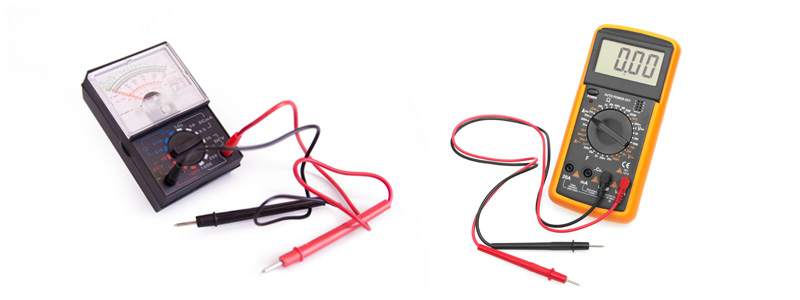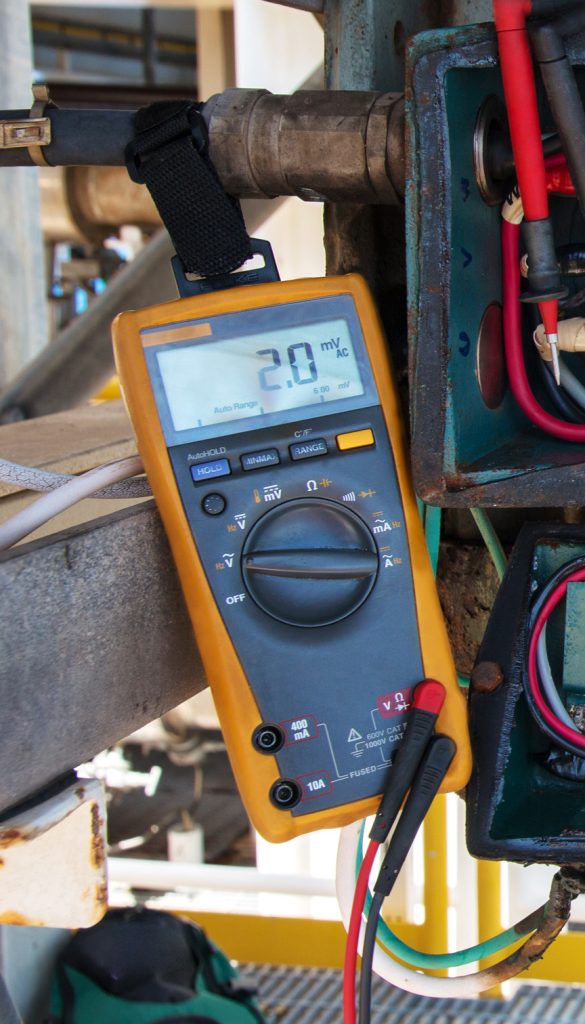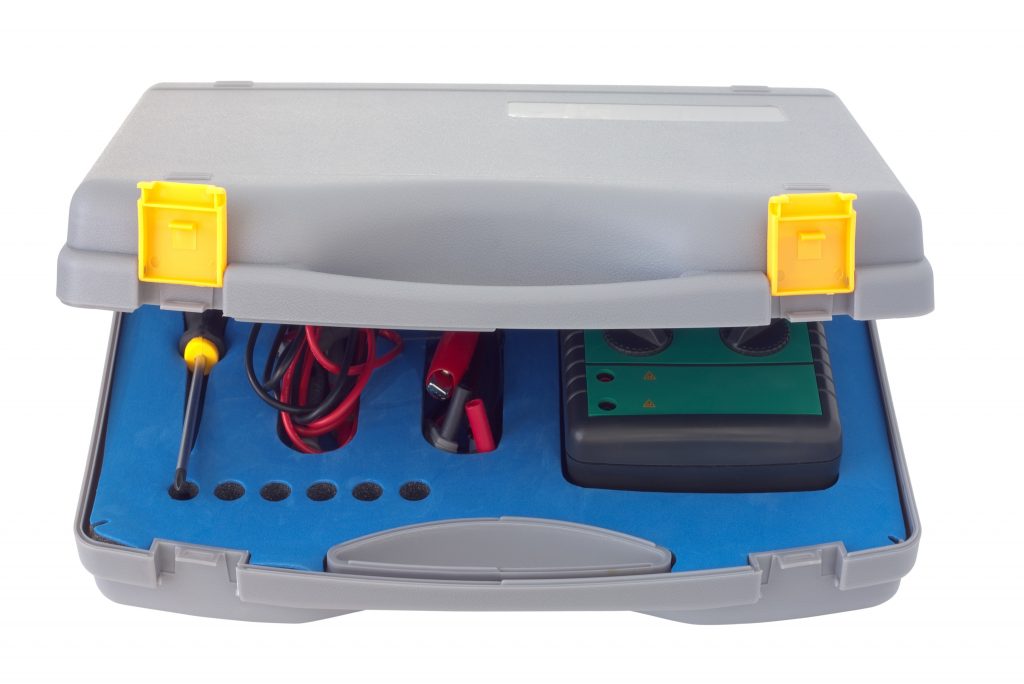Use and Storage of Multimeters
A technician is only as accurate as the measurement equipment they are using. If the equipment is used incorrectly or is faulty, then the measurements will be inaccurate. If the measurements are inaccurate, then the technician will draw the wrong conclusions. To avoid getting inaccurate readings, you need to handle, use, and store meters properly. When you are done using a multimeter, it should always be turned off to extend battery life.
Precautions in Handling and Using a Meter
These precautions apply equally to digital and analog meters.
- Do not drop any meter.
- Do not overload any meter. When in doubt, use a high range that you know will not be overloaded. You can always switch to a lower range if necessary.
- Do not tamper with precision instruments. Let a competent instrument repair person service precision instruments.
- Before you connect a meter to a circuit, ensure that the range switch is set to an appropriate position.
- Carefully check circuit connections before applying power to meters.
- Be careful not to touch any other electronic components within the equipment.
- Be careful not to touch the probe tips to each other while connected to anything else.
- Never switch settings (voltage to current for example) while the probes are connected to circuit
The two major types of meters are analog and digital (Figure 1). Although both meters perform the same functions, they look different.
 Figure 1: Analog multimeter and digital multimeter
Figure 1: Analog multimeter and digital multimeter
As you can see, the difference is in the display unit. Digital meters are usually simpler to use and are more accurate than analog meters, and therefore have become more popular. We will focus on the digital multimeter (DMM), as it is the most common type in use, although analog multimeters may still be preferable in some cases, for example when monitoring a rapidly varying value.
Handling a Multimeter
 When handling a multimeter it is wise to be sure the meter is held securely. Dropping a multimeter, especially an analog meter, even from a small height can affect future readings and the accuracy of the multimeter. While taking readings the user is most likely going to need the use of both hands to complete the task. As a result it is necessary to be sure the meter is set securely in a safe place where it can be read without having to change the user’s position. If no suitable spot is available, a second person to hold the meter and/or record the readings may be necessary. Some meters also can be equipped with magnetic straps or tethers to aid in their use by a single technician.
When handling a multimeter it is wise to be sure the meter is held securely. Dropping a multimeter, especially an analog meter, even from a small height can affect future readings and the accuracy of the multimeter. While taking readings the user is most likely going to need the use of both hands to complete the task. As a result it is necessary to be sure the meter is set securely in a safe place where it can be read without having to change the user’s position. If no suitable spot is available, a second person to hold the meter and/or record the readings may be necessary. Some meters also can be equipped with magnetic straps or tethers to aid in their use by a single technician.
Storage
Multimeters should be stored in a dry place where they will not be subject to physical damage. Most multimeters will come with a case in which to store them. This case not only keeps all the pieces together in one place (meter, leads, batteries, magnetic strap etc.) it will also protect the vulnerable parts, such as the display, from any damage that may occur.
When storing a multimeter for a prolonged period, removing the batteries will ensure that corrosion will not accumulate at the battery connections.
The leads on multimeters can be varying in length. Additional care must be taken to ensure the internal connections of the leads do not become damaged by tightly winding them around themselves.


